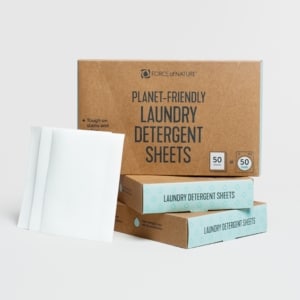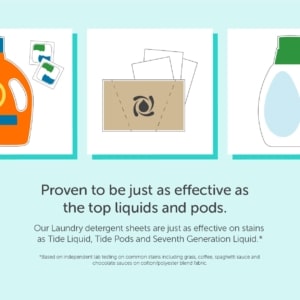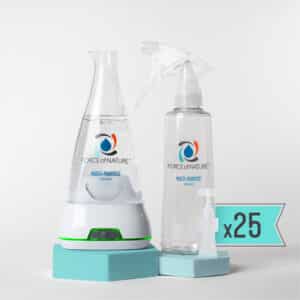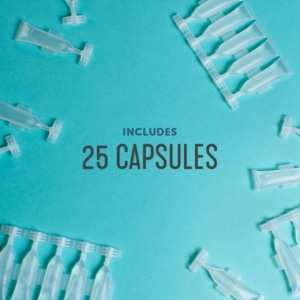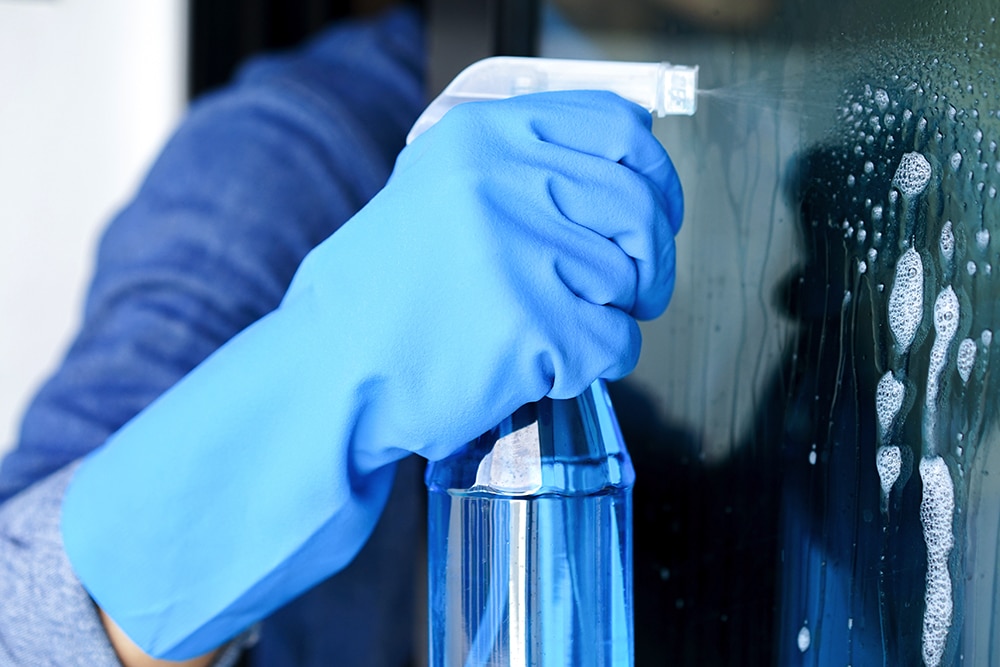
We all understand the vital importance of keeping our businesses disinfected to protect our staff and clients from viruses and bacteria – and not just during the pandemic! Sadly, many conventional cleaning and disinfecting products may not be keeping us healthy, and may even be making us sick. The fact that we have “ramped up” the use of disinfectants means we’re being exposed to these chemicals at unprecedented levels, which is pretty scary give they can contain powerful chemicals that can cause serious health hazards. So, what do you do? You need to disinfect, but you don’t want to put your people at risk. We’ve got you! Here are some of the top ingredients to avoid when disinfecting your workplace and one magical ingredient that’s both a powerful disinfectant and gentle enough to be used on surfaces without rinsing.
Top 4 Ingredient Safety Tips for Disinfecting:
Not all ingredients are created equal, and even some “natural” products can pack a hefty toxic punch. As you are trying to safely clean and disinfect your workplace during this pandemic (and beyond) keep these top tips in mind.
1. Avoid The Worst of the Worst
Here’s the terrible truth: companies don’t have to prove the chemicals they are using are safe before putting them into products. It’s on us as consumers to do the research and figure out what is and isn’t safe for use in our businesses. Here are some of the top terms to look out for on labels and avoid when disinfecting your business:
- Sodium Hypochlorite (Bleach): There’s a reason why the Safety Data Sheet for a bleach-based disinfectant typically tells users to wear protective gloves, protective clothing, face protection, and eye protection such as safety glasses. Bleach is a very serious chemical that must be used with extreme caution. It’s caustic to the soft tissues in our bodies, particularly our airways. It also loses efficacy overtime, so it is not as shelf-stable as consumers may think. Always check the instructions for dilution ratios and shelf life information.
- Ammonium Hydroxide (Ammonia Water, Liquid Ammonia): used often in drain and oven cleaners, toilet cleaners and other household cleaners, this chemical causes severe skin burns and eye damage and respiratory irritation.
- Fragrance: Fragrance is a proprietary term that allows manufacturers to avoid disclosing ingredients. Fragrances, even natural ones, are linked to serious respiratory symptoms including allergies and asthma.
- Phthalates: Phthalates go hand in hand with fragrance as they help fragrance stick around longer. They’re also hormone disrupting chemicals that can cause serious health effects like endocrine disruption, birth defects and developmental delays, and negative impacts on the immune system.
- Triclosan: Triclosan is an antimicrobial agent that is often used is correlated with health effects like endocrine disruption.
- Alcohol: Alcohol is drying to your skin and respiratory system and can cause skin and eye irritation, especially in babies and children. It’s also correlated with an increase in poisonings and eye injury in children under 12.
2. Follow Directions Exactly
This may sound obvious, but to be considered a “disinfectant,” a product has to meet testing standards set by the Environmental Protection Agency. Disinfectants are only proven to be effective if they’re used according to directions. Those directions aren’t always as straightforward as you might think and specify critical information such as dwell time, or the amount of time a disinfectant must sit on a surface before it’s rinsed or wiped. For a list of disinfectants approved for use against coronavirus, SARS-CoV-2, check out the EPA’s List N.
3. Take Safety Precautions
Wear gloves when handling conventional disinfectants to avoid the chemicals from burning your skin. Ensure your staff have the proper equipment and training to handle these chemicals safely and always (always!!!) clearly label disinfecting products and store them safely away from where your clients and staff will come into contact with them accidentally.
4. Ventilate!
How crazy is this: studies have shown that exposure to cleaning and disinfecting products is as harmful to our bodies as smoking 20 cigarettes a day. We spend our lives studying these chemicals and that statistic was shocking, even to us. Due to the fact that coronavirus targets our respiratory systems, it’s more important than ever to ensure we are not injuring the delicate tissue of our respiratory systems, especially for adults and children with allergies and asthma. Always keep the room well-ventilated when you are using a disinfectant or cleaning product.
Our Magical Disinfecting Ingredient: Hypochlorous Acid!
Force of Nature is on the EPA’s list N, the disinfectants approved for use against SARS-CoV-2, the cause of Covid-19. As for the variants, EPA expects all products on List N to kill all strains and variants of SARS-CoV-2. The active ingredient in Force of Nature is hypochlorous acid (HOCl), which is the same substance created by our immune systems to fight infection. Force of Nature earns the highest possible rating by Mayo Clinic’s allergy rating system. Our revolutionary device uses exactly the right concentrations of salt, vinegar and water to create hypochlorous acid, an antimicrobial that is free from skin and respiratory irritants and is so gentle that it’s used in ophthalmology, veterinary medicine, wound care, and is even being used by dermatologists to help treat and heal irritated skin and “maskne.”
Learn more about Force of Nature, our EPA-registered disinfectant, and how you can use it in all kinds of applications for your business, too. Want to buy in bulk, or need to make enough of our formula for several bottles a day? We’ve got you covered on that too with Force of Nature Pro, our large capacity appliance that makes 32 or 64 oz of all-in-one cleaner, deodorizer and disinfectant.
